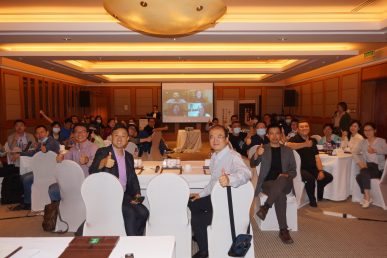Technology is constantly evolving. From couch surfing to surfing the web, creative problem solving either rides the wave in real time or gets towed under.
This is where open infrastructure is barreling ahead.
Take, for example, traffic. Great for websites – not so much for commutes. Just as a city expands roads and adds stoplights to meet the needs of a growing population, technology infrastructure demands the same type of thinking. Adaptability is key to keep things moving
These two words — open infrastructure — carry a lot of meaning. Let’s break them down in context.
Open refers to open-source components, meaning that the source code is available to anyone to use, study and share with others. Open source is becoming increasingly important to organizations worldwide. Why? Because they’re not locked into closed proprietary boxes, people can build on them and tailor them as needed, with the freedom and flexibility to innovate more effectively. It also allows them to find and create custom solutions faster than the market can provide.
But open source is only half of this equation. As Mark Collier, OpenStack Foundation COO says, “Open source is required, but it’s not enough.” It rests on a base of infrastructure.
Infrastructure is the backbone that supports hardware, software, networks, data centers, facilities and related equipment used to develop, test, operate, monitor, manage or support information technology services.
In its simplest form, Open Infrastructure is IT infrastructure built from open-source technologies, available for all users to work with, to improve and contribute back.
To ensure all these users benefit from open-source software, are able to engage with the community and chart the future course for its development, the Four Opens were set out in early 2010 as guiding principles.
- Open source – all software developed must be done under an open source license. The software must be usable and scalable for all users anywhere in the world and cannot be feature or performance limited.
- Open community – the OpenStack community is a level playing field, where anyone can rise or get elected to leadership positions. There is no reserved seat: contribution is the only valid currency.
- Open development – all development processes are transparent and inclusive. Everyone is welcome to participate and suggestions are considered regardless of prior levels of contribution.
- Open design – design is not done behind closed doors. It is done in the open, and includes as many people as possible.
These principles have been fundamental to making the OpenStack community what it is today. Currently, the community is drafting blog posts around the Four Opens chronicling the learnings and successes from this approach to share with the broader Open Infrastructure ecosystem. If you want to get involved, you can do so here.
“From the beginning, OpenStack knew there would be a need to interact and integrate with external projects,” says Allison Randal, a board member of OpenStack Foundation since 2012, in an Open Infra Summit lightning talk. That said, as the number of adjacent use cases expanded — from edge, CI/CD, containers and more — the landscape also shifted. The shift was towards offering broader solutions to organizations and projects, supporting their overall IT infrastructure needs.
As the projects grew in number and in size, it became clearer that the ongoing success of OpenStack and these projects were interdependent. This made the shift in focus even more natural and further aligned OpenStack with the goal of supporting and strengthening community.
To further encourage collaboration and boost inclusivity, the OpenStack Summit changed its name to the Open Infrastructure Summit. The Summit provides common ground from all corners of the community — from 5G to hybrid cloud and dozens of adjacent open-source projects — and the name change reflects this. The goal is to make the summit more open and welcoming to all projects and invite everyone to learn alongside the people building and operating open infra.
Recognizing the shift in open infrastructure, the OSF is embracing it by supporting the communities helping to shape this movement. The OSF also recognizes that no single technology solution is going to support this transition and the integration and knowledge sharing around these open technologies is key to successful implementation.
As our world continues to evolve, open infrastructure will adapt and evolve with it.
Superuser is always interested in community content. Got something to say? Get in touch: editorATopenstack.org
- Using GitHub and Gerrit with Zuul: A leboncoin case study - October 24, 2019
- A Global Celebration “For The Love of Open!” - August 28, 2019
- Building a virtuous circle with open infrastructure: Inclusive, global, adaptable - July 30, 2019

)










